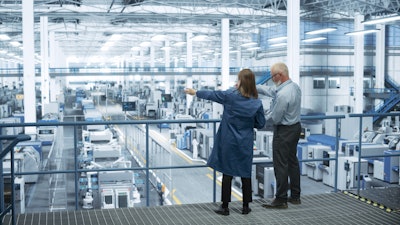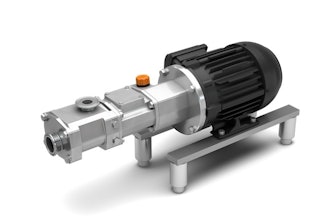
September survey findings from manufacturing software firm CADDi detailed a sour outlook from manufacturing industry professionals.
Of the 330 manufacturing professionals polled, half said they were expecting a recession in 2025, and just 11% characterized their economic outlook as positive.
Obviously, a lot has happened since then. Although this publication doesn't typically delve into policy specifics — and certainly isn't blessed with a crystal ball — there is one thing we know for sure: with a new administration at the helm, there will be some uncertainty ahead, and we can't be sure whether if the results will be good or bad for manufacturers.
What we also know, however, is that uncertainty isn’t new, and industrial businesses have faced more than their fair share of challenges since the pandemic upended business (and life) as we knew it. While not all businesses survived, those who emerged were, in many cases, stronger for it: they’d honed in on priorities and growth objectives and even left behind some unprofitable pursuits to create leaner organizations.
Still, as businesses of all sizes prepare for a new year, it’s with major questions as to the impact of future federal policy – theoretical only, at this point. While that's critical, it’s not the only consideration: many experts have weighed in on trends that they expect in 2025 and these, in my opinion, are a little easier to predict. Let’s take a look at some of the forecasts:
Nearshoring Will Be “Essential”
Randy Carr, CEO of World Emblem, the world’s largest emblem and patch manufacturer, recently shared some thoughts on trends his business sees on the horizon, one of which is manufacturers using nearshoring as a primary strategy leading to faster turnaround times, better quality control and overall cost savings.
“The recent port strikes have only underscored the need for more localized production that reduces the reliance on distant, often disrupted supply chains,” said Carr, who added that he believed U.S. companies who relocated distant production to neighboring countries, like Mexico, would improve production agility and strengthen supply chain resilience.
Cyber Threats to Persist
Todd Thorsen, CISO at CrashPlan, provider of secure cloud backup solutions, believes manufacturers will become more frequent targets of cyberattacks.
“Manufacturers are part of critical infrastructure and can be high-value targets for bad actors, especially those involved in defense, energy, transportation, and medical supplies,” said Thorsen. Because of the increasing need for defenses, he suggested that industry organizations be “proactive, and mature their security and resilience capabilities including detection, response and recovery.”
Automation, AI & Digital Twins
Slalom, a consulting firm that works with manufacturing companies to modernize operations, upskill teams and drive sustainability initiatives, recently identified advancing automation as a key trend for manufacturers looking to leverage AI. They believe data generated at the point of activity is “vital for improving efficiency and developing high-value AI/GenAI use cases, necessitating enhanced data management and integration of automation in production.” They see yet another tech trend in businesses using digital twins for simulations, ultimately reducing development costs and time-to-market..
Businesses to Leverage Tech to Enhance Skilled Labor
In a recent article for Forbes, futurist Bernard Marr identified workplace trends that would define 2025. Among them were the impetus for businesses to cross-train and upskill workers as AI and automation lead to the need for new and novel capabilities among staff. Marr added that, "Organizations offering robust learning opportunities would attract top talent, positioning themselves as growth incubators.” Marr also noted that a hybrid workplace would cement itself as the “new normal” and that more companies would consider non-traditional scheduling, such as four-day work weeks, in an effort to promote work-life balance and, thus, retain top talent.
Underpinning these trends, and barring any major hiccups, we may see some improvement to macroeconomic trends as inflation continues to stabilize and interest rates decline.
Oxford Economics revealed in September that it expects industrial production to grow by 2.6% this year, up from a 2023 rate of 1.8%. Said Oxford, “Our view remains that value-added industrial production bottomed out last year and is on course for a gradual recovery.”
Hopefully, this improvement materializes. Based on the aforementioned trend projections, manufacturers will have a lot of work to do to keep pace with the business objectives they’ll need to maintain the agility they sharpened during the pandemic. Luckily, we’ve been here before, and came out, hopefully, smarter on the other side.





















